3D Art
Conceptual / Visual-Metaphor / Interactive-Sculpture Project
"A work of art is above all an adventure of the mind." - Eugene Ionesco
"All of the significant art of today stems from Conceptual Art; this includes the art of installation, political, feminist and socially-directed art." - Sol LeWitt
History
To better appreciate the contributions that Conceptual Art has made to "(a)ll of the significant art of today", it's first necessary to understand exactly what we mean when we use this term.
To be clear, there's a VAST RANGE of artworks that might have conceptual aspects (i.e., the IDEA behind the work is important), but they CANNOT be called Conceptual Art because the term refers to the language-based artform initiated by Sol LeWitt in the early 1960's.
For example: Banksy's street art (made with stencils and executed as though it were graffiti) has many conceptual aspects: self-parody, social critique, community engagement, deconstructing the relationship between power and authority, and so on. The presence of these concepts/ideas DOES NOT make Banksy's work Conceptual Art (in the art historical sense of the term).
Below, is an actual Conceptual Artwork made by the American artist, Lawrence Weiner and presented in his 1968 book, Statements. Weiner's work nicely demonstrates why Conceptual Art is difficult (almost impossible) to commodify:
"A removal of an amount of earth from the ground. The intrusion into this hole of a standard processed material." - Lawrence Weiner, 1968.
Weiner's statement can be read as a set of instructions to make an artwork, however it doesn't necessarily NEED to be executed and can exist simply as text.
Weiner outlined the principles upon which he based his Conceptual Art:
- The artist may construct the piece.
- The piece may be fabricated.
- The piece need not be built. Each being equal and consistent with the intent of the artist, the decision as to condition (of the artwork) rests with the receiver upon the occasion of receivership.
- Lawrence Weiner, 1968 (my parentheses).
Because it's built with language and transmitted to the audience through text, Conceptual Art is notoriously difficult to buy and sell (a useful distinction as we'll see later in this essay). Weiner admitted this fact when he wrote:
"People, buying my stuff, can take it wherever they go and can rebuild it if they choose. If they keep it in their heads, that's fine too. They don't have to buy it to have it - they can just have it by knowing it." - Lawrence Weiner, 1968.
The notion that one can own an artwork "...just by knowing it" might be a revelation to those who adhere to a very narrow (traditional) definition of Art. Traditional sculptures and paintings (and other embodied artforms) are essentially ideas that have been embedded within a material - like bronze or oil paint - making them easy to buy and sell.
This kind of marketability is ANTITHETICAL to Conceptual Art because such works are PRIMARILY ABOUT IDEAS and NOT MATERIALS. To turn an idea into a material object makes no sense unless the object itself is indispensable to an appreciation of the work, at which point it might become marketable; that is, if the artist can convince a potential buyer to part with their money. I would argue that Conceptual Art might be the closest thing that we will ever see to a TRULY EGALITARIAN artform: FREE for anyone who wants it, regardless of one's wealth (or lack thereof)! Here's an overview of the philosophy that puts ideas BEFORE materiality in Art:
Sentences on Conceptual Art, by Sol Lewitt
- Conceptual artists are mystics rather than rationalists. They leap to conclusions that logic cannot reach.
- Rational judgements repeat rational judgements.
- Irrational judgements lead to new experience.
- Formal art is essentially rational.
- Irrational thoughts should be followed absolutely and logically.
- If the artist changes his mind midway through the execution of the piece he compromises the result and repeats past results.
- The artist's will is secondary to the process he initiates from idea to completion. His wilfulness may only be ego.
- When words such as painting and sculpture are used, they connote a whole tradition and imply a consequent acceptance of this tradition, thus placing limitations on the artist who would be reluctant to make art that goes beyond the limitations.
- The concept and idea are different. The former implies a general direction while the latter is the component. Ideas implement the concept.
- Ideas can be works of art; they are in a chain of development that may eventually find some form. All ideas need not be made physical.
- Ideas do not necessarily proceed in logical order. They may set one off in unexpected directions, but an idea must necessarily be completed in the mind before the next one is formed.
- For each work of art that becomes physical there are many variations that do not.
- A work of art may be understood as a conductor from the artist's mind to the viewer's. But it may never reach the viewer, or it may never leave the artist's mind.
- The words of one artist to another may induce an idea chain, if they share the same concept.
- Since no form is intrinsically superior to another, the artist may use any form, from an expression of words (written or spoken) to physical reality, equally.
- If words are used, and they proceed from ideas about art, then they are art and not literature; numbers are not mathematics.
- All ideas are art if they are concerned with art and fall within the conventions of art.
- One usually understands the art of the past by applying the convention of the present, thus misunderstanding the art of the past.
- The conventions of art are altered by works of art.
- Successful art changes our understanding of the conventions by altering our perceptions.
- Perception of ideas leads to new ideas.
- The artist cannot imagine his art, and cannot perceive it until it is complete.
- The artist may misperceive (understand it differently from the artist) a work of art but still be set off in his own chain of thought by that misconstrual.
- Perception is subjective.
- The artist may not necessarily understand his own art. His perception is neither better nor worse than that of others.
- An artist may perceive the art of others better than his own.
- The concept of a work of art may involve the matter of the piece or the process in which it is made.
- Once the idea of the piece is established in the artist's mind and the final form is decided, the process is carried out blindly. There are many side effects that the artist cannot imagine. These may be used as ideas for new works.
- The process is mechanical and should not be tampered with. It should run its course.
- There are many elements involved in a work of art. The most important are the most obvious.
- If an artist uses the same form in a group of works, and changes the material, one would assume the artist's concept involved the material.
- Banal ideas cannot be rescued by beautiful execution.
- It is difficult to bungle a good idea.
- When an artist learns his craft too well he makes slick art.
- These sentences comment on art, but are not art.
First published in 0-9 (New York), 1969, and Art-Language (England), May 1969
Theory
We've examined the use of "found objects" in art and the crucial role that Marcel Duchamp played. Duchamp's Readymades were only a small part of his work overall; he also created intellectually-challenging objects, such as an unassuming little ampoule of hand-blown glass with a label on it that identifies its contents as 50 cc of Paris Air.
Marcel's simple gesture heralds an era of art-making that stirs mixed emotions in some viewers because it asks them to work much harder to understand the artwork. Prior to Duchamp, a viewer wasn't required to do much more than to know a small amount of related information about an artwork, such as the title or the subject matter. Works such as 50 cc of Paris Air now ask the viewer to think critically about the connection of the object to a much larger context that might include history, politics, science, religion, philosophy and many other possible relationships beyond the mere appearance of the work. The viewer must now assign value to a small amount of air (like a commodity) because of its incorporation within an artwork AND its association with a renowned centre of romance and sensual delights.
The reason this work is challenging is that it forces the viewer to engage her imagination: she must think about the unique qualities that constitute the breathable atmosphere within the famous, "City of Lights". Is the air of Paris substantially different than in other places around the world? Perhaps Duchamp's air smells of delicious croissants and Parisian cigarettes.... It's impossible to know for certain that Duchamp's ampoule REALLY contains Paris air; to discover the truth would require breaking the ampoule and testing its contents (therefore destroying the work). The idea behind the artwork (the concept) forces the viewer to exercise not only her imagination but also HER TRUST.
Trust becomes an important factor for other artworks with a conceptual foundation. Walter de Maria's work, Vertical Earth Kilometre consists of 1,000 metres of brass rod, two inches in diameter, that's been inserted into the ground. The only portion that remains visible is a small disk on the surface of the earth, surrounded by a concrete pad in a park in Kassel, Germany. A skeptical viewer might doubt that anything exists beyond the first centimetre (a minimal thickness for a brass disk embedded in the ground).
It would be easy to dismiss Vertical Earth Kilometre as a hoax, in the same way that a skeptic might believe the moon landings to be a hoax. From a slightly different perspective, it becomes a bit of a philosophical issue: does an artwork exist if we can't perceive it? Does a tree make a sound if it falls in the forest and there's no one around to hear it? The residents who lived near Friedrichsplatz Park in 1977 didn't hear any trees falling, but they certainly heard a lot of drilling sounds at exactly the same time that De Maria created Vertical Earth Kilometre. They even took the time to complain to city council about the incessant noise.
The nature of reality and our role as participants and observers seems a daunting topic: as broad and as nuanced as it is philosophical. Complex questions do not deter artists like Damien Hirst, a contemporary, British artist who turned the Art World upside down in 1991 with, The Physical Impossibility of Death in the Mind of Someone Living. The tiger shark in this work is floating in a tank of formaldehyde. It's a fearsome-looking creature, with mouth wide-open and sharp teeth visible, but it's most definitely dead. Hirst presents the animal to us in such a way that it seems eternally suspended in a state between life and death, thereby reinforcing his thesis that it's impossible for the viewer (as a living being) to believe that it's dead. Moreover, by using an animal that's perceived as a terrifying eating-machine, Hirst imbues the work with emotional impact (a heightened sense of lingering energy). Regardless of how sophisticated or knowledgeable the viewer might be, she still finds herself asking, "How can a creature so awesome be dead? It must be resting, preparing to attack!" Trust begins to play an important role once again.
Viewer as Co-Creator
"People, buying my stuff, can take it wherever they go and can rebuild it if they choose. If they keep it in their heads, that's fine too. They don't have to buy it to have it - they can just have it by knowing it." - Lawrence Weiner
How does trust help one to understand and appreciate a conceptual artwork? If the artist tells me that there's Paris air in a sealed piece of hand-blown glass, or a brass rod that extends into the ground for one kilometre, or that a great white shark won't suddenly come to life and devour me, I can choose to set my doubt aside and believe him. With that hurdle out of the way, I can now begin to wonder about other aspects of the work: What unique quality makes Paris air valuable? Why did De Maria make an artwork that no one can see? Why did Hirst choose such a fearsome creature? Questions like these help us to understand and appreciate the artist's INTENTION behind the work (the idea that extends well-beyond the mere appearance of the thing).
It seems that asking for the viewer's trust and belief is an important part of these works. In a very real way, a conceptual artwork places a much greater amount of responsibility on the viewer as a "CO-CREATOR" of the work. Until the viewer accepts certain aspects to be true (the air IS from Paris; the brass rod IS 1,000 metres long; the shark IS lifeless), then the work remains incomplete and only theoretical.
"A work that remains incomplete and only theoretical" might be a good way to describe the experimental nature of Fluxus. Arising in the late 1950's and reaching its full potency during the 1960's and 70's, Fluxus wasn't so much an art movement as it was "a way of thinking". Firmly rooted in the philosophy of Duchamp and other Dada artists (especially the notion of anti-art), Fluxus spanned continents and encompassed many diverse forms of creativity such as ballet, poetry, music, visual art, performance art, architecture, film and much, much more.
It would not be hyperbole to say that Conceptual art owes its existence to the remarkable achievements of Fluxist artists, some of whom had an egalitarian view of creativity and produced works that are known as "Instruction Art". Yoko Ono, among others, would write sets of instructions (sometimes in great detail, but more often in a very general form) describing a series of steps that ANYONE could perform, resulting in the creation of an actual artwork. Yoko Ono's Wish Tree is one such piece that relies on the viewer to make the work happen (see the images). Recreated numerous times over the years, in many different parts of the world and in many different contexts, Wish Tree has involved millions of people, including myself and several hundred elementary and secondary school students with whom I re-created this work (in Calgary and in High River, Alberta in concert with an exhibition titled, Do It, on the University of Calgary campus at the Nickle Arts Museum in 1998).
Instruction Art begs the question: who's the artist when the viewer becomes involved to such an extent? Is it fair to even call it an artwork by the artist if she's never touched (nor seen) the work? Moreover, to what extent does the artwork exist when it takes the form of words on paper? Is it perhaps nothing more than "a theoretical artwork" until the instructions are executed? This is a new phenomenon that hasn't been an issue, until now.
Never before did a viewer need to question the physical actuality of an artwork. A medieval alter-piece or a Renaissance sculpture is unmistakably real and can usually be traced to one maker (or an artist's studio). Now, however, authorship and actuality, theory and existence, are fluid concepts that are continually open to revision. It's similar, perhaps, to our current understanding of reality at the sub-atomic scale where quantum probability, indeterminacy and overlapping states are the norm. Like a modern physicist, a viewer of contemporary art must acknowledge the inherent "strangeness" of things.
The inherent strangeness of things might be a good way to describe Tracey Emin's controversial work, My Bed. Short listed in 1999 for the Turner Prize, this work documents a three-day depressive event in Emin's life. The main component of this installation is an unmade bed: the place in which Tracey was confined for three days with suicidal depression after breaking up with her significant other.
This work might be about as far from a medieval alter-piece or a Renaissance sculpture as any artwork can get. Nevertheless, My Bed does something very important: standing in front of Tracey's unmade bed feels... wrong, slightly voyeuristic, as though we're doing something illicit, like intruding into another's private space without her knowledge or permission.
After spending some time with the work, we begin to trust that we're not being voyeuristic and that Emin has truly granted us a candid glimpse into a very difficult time in her life. Eventually, as we become more comfortable around the work, we reflect on our own private spaces and the times when depression (or sadness at the very least, maybe also due to a broken heart) made it hard to get out of bed.
Tracey's installation is evidence of the struggle that she went through and a reminder that no one is immune from heartache and existential pain. It's at this point (after realizing that each and every one of us has our very own idiosyncratic and individualized version of Tracey's unmade bed) that we arrive at an unexpected sense of our shared humanity with Emin. There's something profoundly poetic and beautiful here, even though it's connected to an event that's decidedly unbeautiful and yet, something that's all too human.
Analytic & Synthetic Concepts
"I was not interested in irony; I wanted to emphasize the primacy of the idea in making art." - Sol LeWitt
There's a tremendous amount of overlap between the Found Object Project and the Visual-Metaphor / Interactive-Sculpture Project. One way to differentiate them is by examining how they function. The Found Object Project is mostly ANALYTIC in the sense that it examines and critiques a value (implicit in the object or idea) to make clear the thinking behind it (beliefs that have a social, political, religious or commercial origin). On the other hand, the Visual-Metaphor / Interactive-Sculpture Project is mostly SYNTHETIC because it merges two or more ideas to produce a new, metaphor-like reality.
The images here depict an installation by Edward and Nancy Kienholz. Made in 1965, this two-thirds-size replica of an actual pub is titled, The Beanery and is a powerful example of synthetic conceptualism. The artist-duo have substituted clocks for faces on all but one of the life-size figures (Barney, the owner); a synthetic alteration that Edward described as symbolizing "...the switch from real time (symbolized by a newspaper) to the surrealist time inside the bar, where people waste time, kill time, forget time and ignore time." (Click here to learn about the restoration of this fascinating work in 2012.)
Let's examine two of Duchamp's readymade sculptures. Fountain (1917) may be described as an ANALYTIC work because it critiques the dynamic between the artist and the Art World, employing an obvious "non-art" object to make it's point clear. In this instance, "the Art World" is defined as the socially-constructed institutions, participants and activity that has come to be called, Visual Art; it's somewhat similar to George Dickie's "Institutional Model of Art".
At its very core, Fountain (1917) posits the idea that it's the artist and NO ONE ELSE who has the final say in what constitutes an artwork, even if the object doesn't resemble art in the slightest. Using the pseudonym of Richard Mutt, Duchamp presented Fountain (1917) for inclusion in a group show at an artist's collaborative gallery (of which he was a member), but was denied entry even though everyone in the group had agreed that ALL submissions would be accepted. Duchamp's analytic exercise revealed that even professional artists found it difficult (at that time) to "think outside of the art box".
On the other hand, an earlier readymade titled, Bicycle Wheel (1913), may be described as SYNTHETIC because it merges a bicycle wheel with a stool to create a fascinating, but ultimately useless piece of furniture (as Duchamp intended). There's no attempt to deconstruct the meaning of either object, nor to arrive at some deeper understanding of how these objects function within a social or a political context.
Of course, it's not as simplistic nor as clear-cut as I've outlined here: there are analytic and synthetic elements in almost every artwork, but rarely in equal proportions, which might provide a possible way to distinguish one type from the other. The Visual-Metaphor / Interactive-Sculpture Project will have analytic aspects, but it's mostly synthetic in the sense that it brings together two or more realities: like, Paris air & commodification; a preserved shark & the concept of death; an unmade bed & our shared humanity; a diamond-encrusted human-skull & the concept of defeating death. In this way, the Visual-Metaphor / Interactive-Sculpture Project is more about using objects to establish a metaphorical meaning, rather than uncovering an insight (although, there's still plenty of insightfulness within these works).
Let's have a closer look at Jeff Koons' work: One Ball, Total Equilibrium Tank (Spalding Dr. J 241 Series) is not a critique of the game or the associated body that controls the game at a professional level (NBA); it's more of a science experiment in achieving a sense of perfect weightlessness. Nevertheless, this work also brings to mind that moment during a basketball game when the ball is thrown and it hangs in the air for a moment or two, as if suspended by an invisible force, before swishing into the net. The basketball has become a visual metaphor for the concept of weightlessness. One might, therefore, describe this work as having a synthetic concept.
A counter argument might be made for the work having an analytic aspect by using a perfectly-measured salt solution to counteract the buoyancy of the rubber ball (so that it stays suspended in the middle of the tank). This is true, but it seems disconnected from the fact that Koons chose a basketball when he could just as easily have chosen any other type of ball. The aesthetic appeal of a basketball (how it's used in the game) was probably important to the outcome of this artwork, but it's a world away from the science of fluid dynamics.
In practice, an artist would not make such distinctions and would work with found objects (or create her own objects) in whichever way is most suitable.
Performance & Interactivity
Conceptual artworks can become exceedingly complex, in both execution and meaning, especially when you begin adding non-static elements, such as performance, viewer interaction and site-specific locations.
Let's examine how analytic conceptualism might occur in performance art. In my performance artwork, Have Lawn, Will Travel, the analytic aspect occurs in how this piece addresses socio-economic issues: economic privilege, a transition from "jobs-for-life" to a gig-economy (with the attendant phenomenon of a nomadic work force), loss of community, homelessness and so on.
The work became synthetically conceptual when I merged an actual lawn made with rolls of sod (my symbol for the American Dream) with a mobile platform (my symbol for the "economic nomad": a new breed of worker who's literally unable to put down roots) and then staged performances at different locations around my city. My performances provided a metaphorical connection between specific locations and a new (at that time), harsher reality where our economic system seems rigged; or at the very least, it seems much harder to achieve success - social mobility, economic security, a supportive community, nice things, and so on - than it was for the previous generation (so-called, Baby Boomers).
Thus, I hunted for an apartment and fed coins into a parking meter while my lawn was parked in a pay lot; my family and I took our meagre possessions to a strip-mall (where the shoppers are) so we could have the best yard-sale ever; I played games of chance and strategy with a friend at a Canada Employment Centre; in an impressive display of multi-tasking, a co-worker and I maximized our downtime (during the long commute to work) by combining an aerobic activity (paddling a raft down the Bow River, toward downtown) with enjoyment of our lawn; I filled out almost one-thousand 649 lottery tickets in front of a CIBC bank that had put up a misleading advertisement (promising a "Home Free Faster"); and so on.
Analytic and synthetic elements came together, in more or less equal proportions in this artwork, to create a coherent statement about the demise (or, perhaps the evolution) of "The American Dream".For a more detailed discussion about the metaphorical aspects of a mobile lawn, or to see more images from this series of performance installations, follow this link: Have Lawn, Will Travel.
It might be useful to think about interaction (in an artwork) as having a specific direction, with the artwork as an intermediary element, usually between the artist and the viewer. A work of performance art will have "a direction" that moves from the artist toward the artwork: the artist acts on the art-object in some way, with the viewer acting only as an observer (see the images below of Amanda's bust-block carving).
An interactive work, on the other hand, will have directionality that moves from the viewer toward the artwork, with the viewer causing a change (of some sort, either long-term or short-term), in the state of that art-object (see the images below of the bubble-gum artwork). At other times, when ACTIVITY becomes the most important element in a work of performance art, the object can be eliminated entirely, leaving only the action of the artist, or an interaction between the artist and the viewer (see the images below of Natalie's performance, Blind Connection).
Examples of Student Work
Project Description
OBJECTIVE, You have three options for this project:
- Create a conceptual artwork that encourages the viewer to interact with the piece, either physically or by using her imagination. The viewer will become a trusting co-creator, without whom you would not be able to complete this artwork (see the work above with chalk and a life-cast torso in a blackboard box, or the bubble-gum machine and the bust covered with chewed gum).
- Create a conceptual artwork that synthesizes two or more ideas to produce a new reality with a metaphorical sensibility (see the work above with the three-legged foot-stool, or the weight scale with casts of human feet).
- Create a conceptual artwork that includes some aspect of performance, either with or without an object.
Note
Before you begin, you might find it helpful to review the description for the Found Object Project. You can start your Visual-Metaphor / Interactive-Sculpture Project by following the process that's described in the Found Object Project description. Pre-made items are well-suited for use with either project, but they are NOT an absolute necessity with the Visual-Metaphor / Interactive-Sculpture Project (see the examples above).
PROCEDURE: Step 1 - Create an object(s) that's conceptually synthetic.
Step 2 - Write a paragraph (of no more than 150 words) about your idea. Explain the tangible (or intangible) characteristics of the object(s) that you've made or modified. Your paragraph should answer the following questions:
- Which physical or ideological properties of your object(s) are most important in this artwork?
- What are the observations or personal understanding that brought you to make this conceptual work?
- How are you hoping the viewer will react to this artwork?
Step 3 - Present your work to the class with a short presentation.
AESTHETIC: Your finished work must exhibit a comprehensive understanding of the Compositional Principles of Emphasis, Variety and Unity. As with the Found Object Project, the more transparent your thesis, the higher your mark (i.e., the concept that you've chosen is well-presented in the finished work and doesn't require a lengthy explanation). Your work will also show that you have attended to the details of creating a well-finished work that is clean and free of defects.
Further Research
I would recommend these videos about art from two excellent PBS series:
- Dada: The Original Art Rebels documentary, 2016 (Manufacturing Intellect | 57m 12s)
- Allora & Calzadilla in "Paradox" (Art in the Twenty-First Century, Season 4 | 13m 01s)
- The Case for Conceptual Art (Art Assignment, Season 4 Episode 17 | 10m 29s)
- The Case for Yoko Ono (Art Assignment, Season 2 Episode 35 | 6m 45s)
- Peter Liversidge - Proposals (Art Assignment, Season 3 Episode 21 | 8m 12s)
- The Case for Performance Art (Art Assignment, Season 3 Episode 12 | 9m 9s)
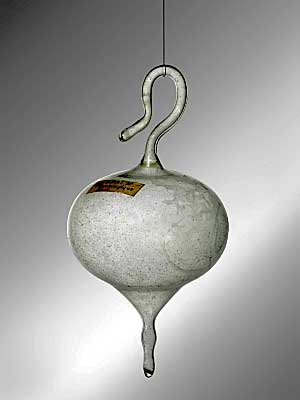
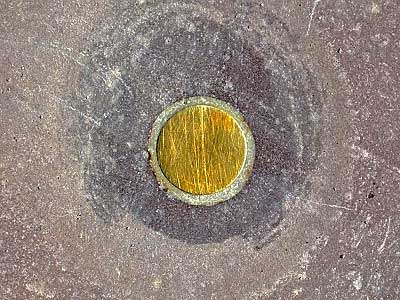
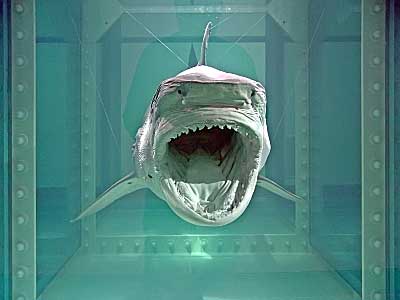
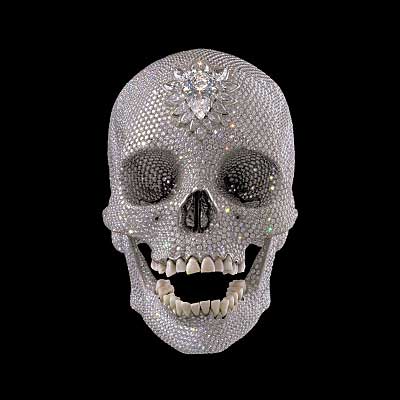


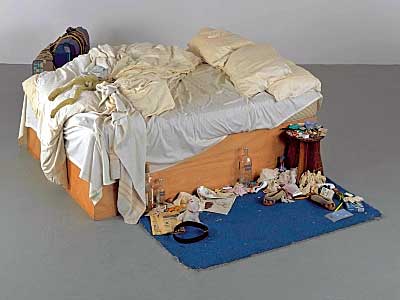







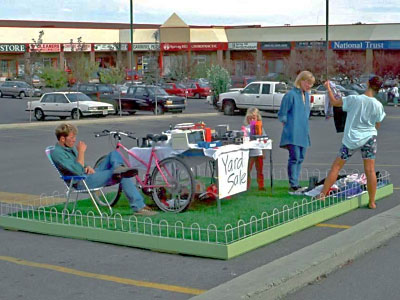


.jpg)
.jpg)
.jpg)
.jpg)
.jpg)
.jpg)
.jpg)
.jpg)
.jpg)
.jpg)
.jpg)
.jpg)
.jpg)
.jpg)
.jpg)
.jpg)
.jpg)
.jpg)
.jpg)
.jpg)
.jpg)
.jpg)
.jpg)
.jpg)
.jpg)
.jpg)
.jpg)
.jpg)
.jpg)
.jpg)
.jpg)
.jpg)
.jpg)
.jpg)
.jpg)
.jpg)
.jpg)
.jpg)
.jpg)
.jpg)
.jpg)
.jpg)
.jpg)
.jpg)
.jpg)
.jpg)
.jpg)
.jpg)
.jpg)
.jpg)
.jpg)
.jpg)
.jpg)
.jpg)